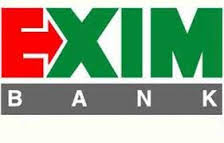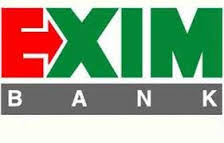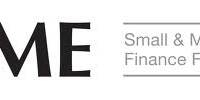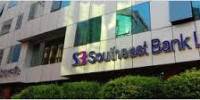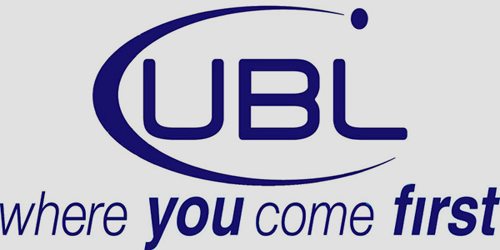Foreign exchange
Introduction
Foreign exchange is the means and methods by which rights to wealth in a country’s currency are converted into rights to wealth in another country’s currency. In banks when we talk of foreign exchange, we refer to the general mechanism by which a bank converts currency of one country into that of another. Foreign Exchange Department (FED) is the international department Bangladesh Bank issues license to scheduled banks to deal with foreign exchange. These banks are known as Authorized Dealers. If the branch is authorized dealer in foreign exchange market, it can remit foreign exchange from local country to foreign countries. So EXIM Bank, Principal branch is an authorized dealer.
There are three kinds of foreign exchange transaction:
Import
Export
Remittance.
Import:
To import, a person should be competent to be and importer’. According to Import and Export Control Act, 1950, the Office of Chief Controller of Import and Export provides the registration (IRC) to the importer. In an international business environment, buyers and sellers are generally unknown to each other. So seller of goods always seeks security for the payment of his exported goods. Bank gives export guarantee that it will pay for the goods on behalf of the buyer if the buyer does not pay. This guarantee is called Letter of Credit. Thus the contract between importer and exporter is given a legal shape by the banker by ‘Letter of Credit’.
# LETTER of Credit:
Definition:
A letter of credit is a letter issued by a bank (know as the opening or the issuing bank) at the instance of its customer (known as the opener) addressed to a person (beneficiary) undertaking that the bills drawn by the beneficiary will be duly honored by it (opening bank) provided certain conditions mentioned in the letter gave been complied with.
Parties to the L/C:
| Importer | Who applies for L/C |
| Issuing Bank | It is the bank which opens/issues a L/C on behalf of the importer. |
| Confirming Bank | It is the bank, which adds its confirmation to the credit and it, is done at the request of issuing bank. Confirming bank may or may not be advising bank. |
| Advising or Notifying Bank | It is the bank through which the L/C is advised to the exporters. This bank is actually situated in exporter’s country. It may also assume the role of confirming and / or negotiating bank depending upon the condition of the credit. |
| Negotiating Bank | It is the bank, which negotiates the bill and pays the amount of the beneficiary. The advising bank and the negotiating bank may or may not be the same. Sometimes it can also be confirming bank. |
| Accepting Bank | It is the bank on which the bill will be drawn (as per condition of the credit). Usually it is the issuing bank. |
| Reimbursing Bank | It is the bank, which would reimburse the negotiating bank after getting payment – instructions from issuing bank. |
Steps for import L/C Operation – 8 steps operation:
Step 1 – Registration with CCI&E:
For engaging in international trade, every trader must be first registered with the Chief Controller of Import and Export.
By paying specified registration fees to the CCI&E. the trader will get IRC/ERC (Import/Export Registration Certificate), to open L/C with bank, this IRC is must.
Step 2 – Determination terms of credit:
The terms of the letter of credit are depending upon the contract between the importer and exporter. The terms of the credit specify the amount of credit, name and address of the beneficiary and opener, tenor of the bill of exchange, period and mode of shipment and of destination, nature of credit, expiry date, name and number of sets of shipping documents etc.
Step 3 -Proposal for Opening of L/C:
To have an import LC limit an importer submits an application to department to EXIM Bank. The proposal contains the following particulars:
Full particulars of the bank account
Nature of business
Required amount of limit
Payment terms and conditions
Goods to be imported
Offered security
Repayment schedule
Step 4 – Application by importer to the banker to open letter of credit:
For opening L/C, the importer is required to fill up a prescribed application form provided by the banker along with the following documents:
| 1. L/C Application form | 7. Authority to debit account |
| 2. Filled up LCA form | 8. Filled up amendment request Form |
| 3. Demand Promissory Note | 9. IMP form |
| 4. Pro-forma invoice | 10. Insurance cover note and money receipt. |
| 5. Tax Identification number | 11. Membership certificate |
| 6.Import registration certificate | 12. Rate fluctuation undertaking |
Step 5 – Opening of L/C by the bank for the opener:
Taking filled up application form from the importer.
Collects credit report of exporter from exporter’s country through his foreign correspondence there.
Opening bank then issues credit by air mail/TELEX/SWIFT followed by L/C advice as asked by the opener through his foreign correspondent or branch as the case may be, at the place of beneficiary. The advising bank advises the L/C to the beneficiary on his own form where it is addressed to him or merely hand over the original L/C to the beneficiary if it is so addressed.
Step 6 – Shipment of goods and lodgment of documents by exporter:
Then exporter ships the goods to the destination of the importer country
Sends the documents to the L/C opening bank through his negotiating bank. Generally the following documents are sent to the Opening Banker with L/C:
| 1. Bill of Exchange | 6. Packing List |
| 2. Bill of Lading | 7. Advice Details of Shipment |
| 3. Commercial Invoice | 8. Pre-shipment Inspection Certificate |
| 4. Certification of Origin | 9. Vessel Particular |
| 5. A certificate stating that each packet contains the description of goods over the packet. | 10.Shipment Certificate |
Step 7 – Lodgment of Documents by the opening Bank from the negotiating bank:
After receiving the documents, the opening banker scrutinizes the documents. If any discrepancy found, it informs the importer. If importer accepts the fault, then opening bankers call importer retiring the document. At this time many thing can happen. These are indicated in the following:
Discrepancy found but the importer accepts – no problem occurs in lodgment.
Discrepancy found and importer not agreed to accept – In this case, importer protest and send back all the documents to the exporter and request his to make in the specified manner. Here banker is not bound to pay because the documents send by exporter is not in accordance with the terms of L/C.
Documents are OK but importer is willing to retire the documents – In this case bank is obligated to pay the price of exported goods. Since importer did not pay for bill of exchange, this payment by bank is one kind of credit to the importer and this credit in banking is known as PAD.
Everything is O.K. but importer fails to clear goods from the port and request bank to clear – In this case banks clear the goods and takes delivery of the same by paying customs duty and sales tax etc. So, this expenditure is debited to the importer’s account and in banking it is called LIM.
Step 8 – Retirement:
The importer receives the intimation and gives necessary instruction to the bank for retirement of the import bills or for the disposal of the shipping document to clear the imported goods from the customs authority. The importer may instruct the bank to retire the documents by debiting his account with the bank or may ask for LTR (Loan against Trust Receipt).
Accounting Procedure in case of L/C Opening:
When the officer thinks fit the application to open a L/C, giving the following entries- creates the following charges-
| Particulars | Debit/ Credit | Charges in Taka |
| Customer’s A/C | Debit | |
| L/C Margin A/C | Credit | |
| Commission A/C on L/C | Credit | 50% |
| VAT | Credit | 15% on commission |
| SWIFT Charge | Credit | 3000/= |
| Datamax | Credit | 1000/= |
| Stamp | Credit | 150/= |
| Postage | Credit | 300/= |
| DHL/Courier | Credit | 1500 |
Amendment of L/C:
After opening of L/C some time’s alteration to the original terms and conditions become necessary. These amendments involve changes in
Unit price
Extension of validity o the L/C
Documentary requirements etc.
Such amendments can be affected only if all the concerned parties agree i.e. the beneficiary, the importer, the issuing bank and the advising bank.
For any amendment the importer must request the issuing bank in writing duly supported by revised Indent/ Proforma Invoice. The issuing bank then advises the required amendment to the advising bank. L/C amendment commission including postage is charged to the clients A/C.
Loan against Trust Receipts (LTR):
- § Advance against a Trust Receipt obtained from the Customers are allowed to only first class tested parties when the documents covering an import shipment or other goods pledged to the Bank as security are given without payment. However, for such advances prior permission/sanction from Head Office must be obtained.
- § The customer holds the goods or their sale-proceeds in trust for the Bank, till such time, the loan allowed against the Trust Receipts is fully paid off.
- § The Trust Receipt is a document that creates the Banker’s lien on the goods and practically amounts to hypothecation of the proceeds of sale in discharge of the lien.
Loan against Imported Merchandise (LIM):
Advance (Loan) against the security of merchandise imported through the Bank may be allowed either on pledge or hypothecation of goods, retaining margin prescribed on their Landed Cost, depending on their categories and Credit Restriction imposed by the Bangladesh Bank. Bank shall also obtain a letter of undertaking and indemnity from the parties, before getting the goods cleared through LIM Account.
Payment Procedure of Import Documents:
This is the most sensitive task of the Import Department. The officials have to be very much careful while making payment. This task constitutes the following:
Date of Payment:
Usually payment is made within seven days after the documents have been received. If the payment is become deferred, the negotiating bank may claim interest for making delay.
Preparing Sale Memo:
A sale memo is made at B.C rate to the customer. As the T.T & O.D rate is paid to the ID, the difference between these two rates is exchange trading. Finally, an Inter Branch Exchange Trading Credit Advice is sent to ID.
Requisition for the Foreign Currency:
For arranging necessary fund for payment, a requisition is sent to the International Department.
Transmission of Message:
Message is transmitted to the correspondent bank ensuring that payment is being made.
Export
Understanding
The goods and services sold by Bangladesh to foreign households, businessmen and Government are called export. The export trade of the country is regulated by the Imports and Exports (control) Act, 1950. There are a number of formalities, which an exporter has to fulfill before and after shipment of goods. The exports from Bangladesh are subject to export trade control exercised by the Ministry Of Commerce through Chief Controller of Imports and Exports (CCI & E). No exporter is allowed to export any commodity permissible for export from Bangladesh unless he is registered with CCI & E and holds valid Export Registration Certificate (ERC). The ERC is required to be renewed every year. The ERC number is to be incorporated on EXP forms and other documents connected with exports.
The formalities and procedure are enumerated as follows:
Obtaining exports LC: To get export LC form exporter issued by the importer.
Submission of export documents: Exporter has to submit all necessary documents to the collecting bank after shipping of goods
Checking of export documents: After getting the documents banker used to check the documents as per LC terms.
Negotiation of export documents: If the bank accepts the document and pays the value draft to the exporter and forward the document to issuing bank that is called a negotiating bank. If the bank does buy the LC then the bank normally act as collecting bank.
Realization of proceeds: This is the period when the issuing bank has realized the payment.
Reporting to the Bangladesh bank: As per instruction by Bangladesh bank the bank has to report to respective department of Bangladesh bank by mentioning latest payment.
Issue to proceeds realization certificate (PRC): Bank has to issue proceed realization certificate of export LC to the supplier / exporter for getting cash assistance.
Export operation
Bangladesh exports a large quantity of goods and services to foreign households. Readymade textile garments (both knitted and woven), Jute, Jute-made products, frozen shrimps, tea are the main goods that Bangladeshi exporters exports to foreign countries. Garments sector is the largest sector that exports the lion share of the country’s export. Bangladesh exports most of its readymade garments products to U.S.A and European Community (EC) countries. Bangladesh exports about 40% of its readymade garments products to U.S.A. Most of the exporters who export through EXIM BANK are readymade garment exporters. They open export L/Cs here to export their goods, which they open against the import L/Cs opened by their foreign importers.
Export L/C operation is just reverse of the import L/C operation. For exporting goods by the local exporter, bank may act as advising banks and collecting bank (negotiable bank) for the exporter.
As an advising bank:
It receives documents from the foreign importer and hands it over to the exporter. Sometimes it adds confirmation on the L/C on request from the Opening Bank. By adding confirmation, it assumes the responsibility to make payment to the exporter.
As Negotiating Bank:
It negotiates the bills and other shipping documents in favor of the exporter. That is, it collects the proceeds of the export-bill from the drawer and credits the exporter’s account for the same. Collection proceed from the export bill is deposited in the bank’s NOSTRO account in the importer’s country. Sometimes the bank purchases the bills at discount and waits till maturity of the bill. When the bill matures, bank presents it to the drawer to encase it.
In our country, Export and Import operation of bank is very much related with one another because of use of Back to Back and maturity of payment for Back-to-Back L/C is set in such that it can be paid out of export proceeds. .
Back-To-Back L/C:
It is simply issued to the clients against an import L/C. Back-to-Back mechanism involves two separate L /C’s. One is master Export L/C and another is Back-to-Back L/C. On the strength of Master Export L/C bank issues bank to Back L/C. Back-to-Back L/C is commonly known as Buying L/C. On the contrary, Master Export L/C is known as Selling L/C.
Features of Back-to-Back L/C:
An Import L/C to procure goods /raw materials for further processing.
It is opened based on Export L/C.
It is a kind of Export Finance.
Export L/C is at Sight but back to Back L/C is at Usance.
No margin is required to open Back to back L/C
Application is registered with CCI&E
Applicant has bonded warehouse license.
L/C value shall not exceed the admissible percentage of net FOB value of relative Master L/C.
Usance period will be up to 180 days.
The import L/C is opened for 75% of the value of Export L/C.
Here L/C issued against the lien of export L/C.
Arrangements are such that export L/C matures first then out of this export profit, import L/C is paid out.
Documents Required for Opening a Back-to-back L/C:
In EXIM Bank Principal Branch, following papers/ documents are required for opening a back-to-back L/C-
Master L/C
Valid Import Registration Certificate (IRC) and Export Registration Certificate (ERC)
L/C Application and LCAF duly filled in and signed
Proforma Invoice or Indent
Insurance Cover Note with money receipt
IMP Form duly signed
In addition to the above documents, the followings are also required to export oriented garment industries while requesting for opening a back-to-back L/C –
Textile Permission
Valid Bonded Warehouse License
Quota Allocation Letter issued by the Export Promotion Bureau (EPB) in favor of the applicant for quota items.
Checklist of exports L/C:
Following defective points are usually found in the Master L/C. So, the bank officials so much carefully check these points. These are:
Name of the Advising Bank.
Name of Transferring Bank
Form of Doc. credit:
Name of Issuing Bank
Documentary Credit No. And issuing date
Date of shipment
Expiry date and place
Applicant/ for order of/ On Account.
Beneficiary/ Favoring
Amount
Availability of Credit
Partial shipment/ Transshipment
Payment condition /Draft Sight
Category.
Description of goods:
Item
Total Qty
Unit price
B/L Clause
Reimbursement clause.
UCPDC Clause
Net FOB value.
Payment of back-to-back L/C:
In case back to back as 60-90-120-180 days of maturity period, deferred payment is made. Payment is given after realizing export proceeds from the L/C issuing bank.
Negotiation of exports documents:
The most common method of financing exporters is negotiation of documents under L/C. It is a post-shipment credit. Here the bank acts as a negotiating bank. After the shipment of the goods, the exporter submits the relative documents to the branch for negotiation. The documents are to submit within the period mentioned in the L/C. after approval of negotiation of the bill the full particulars of the documents are entered into the Foreign bill Purchased (F.B.P) register. The documents are sent to the L/C opening branch with a forwarding letter. The branch claim reimbursement from the issuing bank or from the reimbursing bank, giving clear instructions to credit the proceeds of the bill to the EXIM Bank head office NOSTRO A/C maintained with the named correspondent bank abroad under telex intimation to the Principal branch and Head Office (International Division).
Negotiation stands for payment of value to the exporter against the documents stipulated in the L\C. If documents are in order, EXIM Bank purchases (negotiates) the same on the basis of banker- customer relationship. This is known as Foreign Documentary Bill Purchase (FDBP).
If the bank is not satisfied with the documents submitted to EXIM Bank gives the exporter reasonable time to remove the discrepancies or sends the documents to L/C opening bank for collection. This is known as Foreign Documentary Bill for Collection (FDBC).
Presentation of exports documents for negotiation/Purchase:
After shipment, exporter submits the following documents to EXIM Bank for negotiation.
Bill of exchange
Bill of Lading
Invoice
Insurance Policy/Certificate
Certificate of Origin
Inspection Certificate
Consular Invoice
Packing List
Quality Control Certificate
G.S.P. certificate.
Foreign documentary bills for collection (FDBC):
EXIM Bank forwards the documents for collection due to the following reasons, –
If the documents have discrepancies.
If the exporter is a new client.
FDBC signifies that the exporter will receive payment only when the issuing bank gives payment. EXIM Bank make regular follow-up with the L/C opening Bank in case of any delay in getting payment.
Settlement of Local Bills:
The settlement of local bills is done in the following ways, –
The customer submits the L/C to EXIM Bank along with the documents to negotiate
EXIM Bank official scrutinizes the documents to ensure the conformity with the terms and conditions.
The documents are then forwarded to the L/C opening bank.
The L/C issuing bank gives the acceptance and forwards an acceptance letter.
Payment is given to the customer on either by collection basis or by purchasing the document.
Mode of payment of export bill under L/C:
As per UCPDC 500, 1993 revision there are four types of credit. These are as follows:
Sight Payment Credit:
In a Sight Payment Credit, the bank pays the stipulated sum immediately against the exporter’s presentation of the documents.
Deferred payment Credit:
In deferred payment, the bank agrees to pay on a specified future date or event, after presentation of the export documents. No bill of exchange is involved. Payment is given to the party at the rate of D.A 60-90-120-180 as the case may be. But the Head office is paid at T.T clean rate. The difference between the two rates us the exchange trading for the branch.
Acceptance credit:
In acceptance credit, the exporter presents a bill of exchange payable to him and drawn at the agreed tenor (that is, on a specified future date or event) on the bank that is to accept it. The bank signs its acceptance on the bill and returns it to the exporter. The exporter can then represent it for payment on maturity. Alternatively he can discount it in order to obtain immediate payment.
Negotiation Credit:
In Negotiation credit, the exporter has to present a bill of exchange payable to him in addition to other documents that the bank negotiates.
Foreign Remittance:
This bank is authorized dealer to deal in foreign exchange business. As an authorized dealer, a bank must provide some services to the clients regarding foreign exchange and this department provides these services.
The basic function of this department are outward and inward remittance of foreign exchange from one country to another country. In the process of providing this remittance service, it sells and buys foreign currency. The conversion of one currency into another currency takes place at an agreed rate of exchange, which the banker quotes, one for buying and another for selling. In such transactions the foreign currencies are like any other commodities offered for sales and purchase, the cost (convention value) being paid by the buyer in home currency, the legal tender.
Remittance procedures of foreign currency:
There are two types of remittance:
Inward remittance
Outward remittance.
1. Inward Foreign Remittance:
Inward remittance covers purchase of foreign currency in the form of foreign T.T., D.D, and bills, T.C. etc. sent from abroad favoring a beneficiary in Bangladesh. Purchase of foreign exchange is to be reported to Exchange control Department of Bangladesh bank on Form-C.
2. Outward Foreign Remittance:
Outward remittance covers sales of foreign currency through issuing foreign T.T. Drafts, Travelers Check etc. as well as sell of foreign exchange under L/C and against import bills retired.
Working of this department:
Issuance of TC, Cash Dollar /Pound
Issuance of FDD, FTT & purchasing, Payment of the same.
Passport endorsement.
Encashment certificate.
F/C Account opening &filing.
Opening of Export FC retention Quota A/C& maintain.
Maintenance of ledger of Cash Dollar, FC Deposit A/C & TC.
Maintain FBC register &follow up FBC.
Opening of Student file &Maintain.
Preparation of all related statement, Voucher & posting.
Preparation of Weekly, Monthly, Yearly Statement for Bangladesh Bank returns timely.
Attending all related correspondence to other Bank or Institutions.
Modes:
The remittance process involves the following four modes
| Cash Remittance Dollar/ Pound | Sell | Bank sells Dollar / Pound for using in abroad by the purchaser. The maximum amount of such sell is mentioned in the Bangladesh Bank publication of ‘Convertibility of Taka for Currency Transactions in Bangladesh’. |
| Purchase | Bank can purchase dollar from resident and non – resident Bangladeshi and Foreigner. Most dollars purchased comes from realization of Export Bill of Exchange. | |
| Traveler’s Check (TC) | Issue of TC | TC is useful to traveler abroad. Customers can encase the TC in abroad from the drawer bank. TC is alternative to holding cash and it provides better security than holding cash in hand. |
| Buying Of TC | If any unused leaf of TC is surrendered bank buys it from the customer. All payments are made in local currency. Banks generally buy only those TC. | |
| Telex Transfer | Outward TT | It remits fund by tested TT via its foreign correspondence bank in which it is maintaining its NOSTRO Account. |
| Incoming TT | It also makes payment according to telegraphic message of its foreign correspondence bank from the corresponding VOSTRO Account. | |
| Foreign Demand Draft | Bank issue Demand Draft in favor of purchaser or any other according to instruction of purchaser. The payee can collect it for the drawer bank in which the Issuing bank of Demand Draft holds its NOSTRO Account. Bank also makes payment on DD drawn on this bank by its foreign correspondence bank through the VOSTRO Account. | |
In these processes of remittance, bank must have to make profit as a business institution. Profit is made in two ways:
Commission charged
Difference in the buying and selling rate.
Formalities for opening foreign currency (FC) Account:
The AD may without prior approval of the Bangladesh Bank open Foreign Currency
(FC) account in the name of:
Bangladesh National Residing Broad.
Foreign nationals residing abroad/ in Bangladesh and also foreign firms
Registered abroad and operating in Bangladesh and abstract foreign missions and their expatriate employees.
Resident of Bangladesh nationals working with the foreign / international organization operating in Bangladesh provided their salary in paid in foreign currency.
Foreign exchange earned through business done or service rendered in Bangladesh cannot be put into these accounts.
No payment in foreign currency (FC) may be made to any resident in Bangladesh out of the foreign currency (FC) account.
All citizens of Bangladesh and other persons are residing to Bangladesh who became the owner of any foreign currency (FC).
Papers required:
Application duly billed in and signed.
Photograph (two copies).
Passport photocopy.
Work permit from board investment. (In case of foreign nationals).
Rate of exchange:
It means the price of one currency expressed in terms of another currency. Rate of exchange is the rate by which the relation among different foreign currencies is established in terms of local currency of that country. Value at which one country currency can be converts into another’s country.
In exercise of the power conferred by section three of exchange regulation ACT 1947, Bangladesh has issued license to certain bank to deal in foreign exchange is called authorized dealer.
CONCLUSION
Lots of new commercial bank has been established in last few years and these banks have made this banking sector very competitive. So, now banks have to organize their operation and do their operations according to the need of the market. Banking sectors no more depends on a traditional method of banking. In this competitive world this sector has trenched its wings wide enough to cover any kind of financial services anywhere in this world. The major task for banks, to survive in this competitive environment is by managing its assets and liabilities in an efficient way.
As an internee student in EXIM Bank Bangladesh Limited at Panthopath Branch, Dhaka I have truly enjoyed my internship from the learning and experience viewpoint I am confident that three month internship program at EXIM Bank Bangladesh Limited will definitely help me to realize career in the job market.
During the course of my practical orientation I have tried to learn the practical banking to realize my theoretical knowledge, what I have gathered and going to acquire from various courses. It is great pleasure for me to have practical exposure of EXIM Bank Limited, because without practical exposure it couldn’t be possible for me to compare the theory with practice.
Through the departments and sections are covered in the internship program, it is not possible to go to the depth of each activities of branch because of time limitation. So objectives of the internship program have not been fulfilled with complete satisfaction. However, highest effort has been given to achieve the objectives of the internship program.
So in conclusion it can be said that every organization has its positive as well as negatives and in case of EXIM Bank Bangladesh Limited existence of the later one is less then the earlier one and as the management is determined to reach the pick of success it seems that in near future the negatives will be eliminated. Five years is a very short span of time and the organization, which can establish itself as one of the most reputed private commercial Bank in the country within this short period deserves special credit and with their able leaders EXIM Bank will reach the highest level of success very shortly. I wish the bank all success prosperity in their field.
BIBLIOGRAPHY
- Booklets published by EXIM Bank.
- EXIM Bank Ltd. Annual Report 2008
- Web site of EXIM Bank (www.eximbankbd.com)
- Newsletters published by EXIM Bank
- Prospectus of EXIM Bank Ltd.
